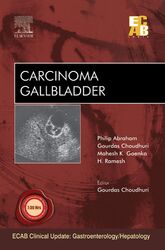「重要なお知らせ:日本語書籍をご購入いただき、eLibraryをご利用の皆さまへ」
エルゼビアは、より快適にサービスをご利用いただくため、システムの重要なアップデートを実施いたします。
現在、新サイト、eBooks+への移行が進められています。
新規ユーザー登録および書籍の登録はElsevier eLibraryでは停止しております。
12月15日以降に
こちらよりご利用・ご登録ください。
Book Description
Carcinoma gallbladder is the third most common GI malignancy and the most common biliary tract malignancy in North India. Of all the known risk factors, gallstones are most commonly associated with GBC. Bile stasis and chronic inflammation along with occupational exposure to heavy metals, dietary carcinogens, and radiation exposure have been found to be responsible for the increased incidence of GB neoplasms. Infections with S. typhii and S. paratyphii along with Helicobacter sp. have also been associated with GBC. p 53 and ras gene mutations are strongly associated with GBC. Early diagnosis of GBC still remains a challenge and is often diagnosed as a part of investigations of any other disease. Most GBCs are at advanced stage at presentation. USG and CT scan are the common modes for the preliminary diagnosis of GBC. Surgery remains the key treatment modality and the only hope for long-term survival. A large number of patients present at the unresectable stage of the tumor, and palliation remains the only alternative to ensure better quality of life.


 (0 rating)
(0 rating) 





